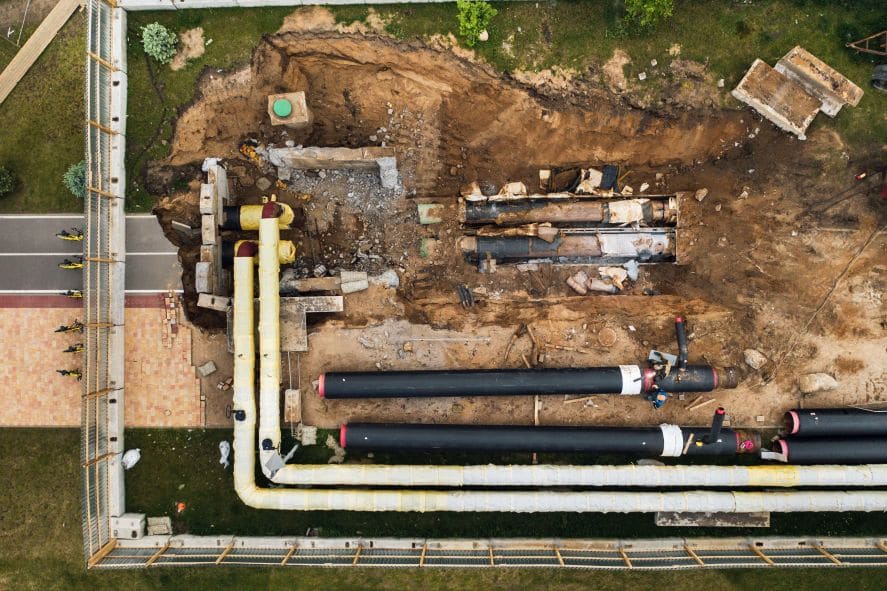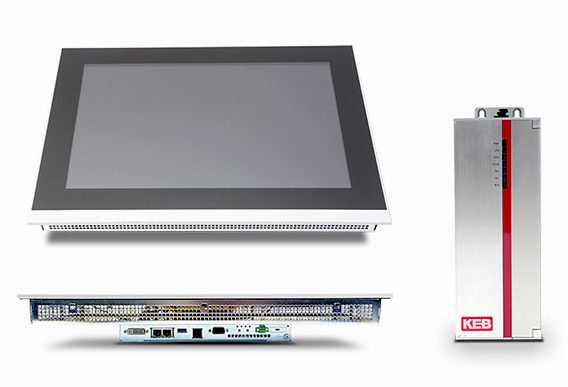Contact an engineer to discuss your application and what is possible with KEB.
Automation for Sewer Inspection and Rehabilitation Robots
Sewer Inspection and Rehabilitation
We give little thought when we flush water and waste down the drain. However, there is a very complex system that is responsible for carrying that waste to a facility that treats it and ultimately transforms it to clean, usable water.
A critical part of this system is the network of pipes needed to carry the waste from a house or business to the treatment facility. Deterioration and, even worse, failures of the sewage pipe infrastructure are a growing concern for many municipalities in US. As the existing infrastructure ages, there is an increased desire for better tools that can help inspect, diagnose, and even repair problems in sewage pipes.

Of course, a complete excavation can be done to fix piping but this is typically invasive, time consuming, and expensive. What if pipes could be inspected and repaired from within – without having to invasively open up the ground? Could diagnostics and repairs be done unobtrusively, much like a stent is placed in a heart without opening up the chest?
Health risks, small pipe diameters, and long pipe lengths make this an unsuitable job for humans. However, this is an ideal application that can be solved with robotics and automation. There is a growing interest in the field of sewer inspection robots — and KEB’s automation products are uniquely suited to solve the difficult application challenges.
What Is a Sewer Robot
A sewer robot looks a lot like a remote-controlled (RC) car. The wheels are motorized and an operator above ground can drive it up and down the pipes as needed through a joystick or control console. The sewer robot is tethered to a vehicle above ground that has a cable reel that feeds out or winds up the cable as needed. The tether cable carries all critical data signals and power to the robot.
There is an increasing desire to use electrical systems compared to hydraulic or pneumatic. Electrical systems provide more precision and the motor components are very power dense. The sewer robot is commonly equipped with a camera, which provides an operator with a view inside the pipe (inspection). Additionally, a motorized tool head is used on the robot. The tool is like an industrial Dremel that can perform a variety of repair functions, including cutting and grinding (rehabilitation).
The Challenges of Sewer Robotics
Compact Size – Motor and Tool Head
There are some constraints that make this application difficult, even for robotics. First, the robot must be relatively small and have a compact form factor in order to fit in small-diameter pipes. Specifically, this means components like motors must be very compact and power dense.
If the robot is required to repair the pipe, then some sort of working tool head is required. This tool head should likely be able to support a variety of different tool bits. Much like a CNC machine, it is often advantageous to run the tool at very high speeds (10,000rpm and above); this is a perfect application for a high-speed spindle motor. But spindle motors require some consideration in order to provide good torque and speed response without overheating.
Long Motor Leads
The power cable tether that connects the sewer robot to the vehicle can be hundreds of feet long. VFD applications with long motor leads can be challenging. A VFD’s PWM output can cause the motor to heat up and stress the motor insulation due to dV/dt voltage spikes.
When unmitigated, the drive’s PWM can prematurely cause the expensive spindle motor to fail due to voltage spikes that propagate down the long cable and damage the motor insulation.
Integrated Vision
You can’t fix what you can’t see. A camera or some sort of vision system is required to diagnose and repair the pipe. The camera will need appropriate lighting and needs to transmit a signal back to a user or vehicle above ground. The camera feed should be very immune to electrical noise so the video quality is clear and useful to the operator.

KEB – The Solution for Robotics
Compact Size – Motor and Tool Head
The tethered robot can often times use 24VDC motors to drive the robot down the pipes. However the spindle drive often requires more power and is better suited to a 230VAC power supply.
KEB does not manufacture the critical spindle motor technology, but we have technical partners that are experts in the field. KEB Spindle drives and these proven motors provide a pre-tested and matched pair, which reduces development risk.

Spindle Motor Control – Torque and Speed
KEB drives offers a proprietary motor control algorithm for spindle motors called Sensorless Closed Loop, or SCL. SCL uses a highly accurate calculated motor model that replaces traditional position devices like an encoder.
SCL provides extremely accurate torque and speed regulation that rivals other traditional closed loop motor control. An added benefit in this application is the ability to remove the motor feedback device as well as the long encoder cabling and associated cable reel.
An additional benefit of SCL is its capability to measure peak torques, it can therefore protect the cutter tools and mechanical system from torque overloads.
Long Motor Leads
KEB has an internal engineering group that focuses on various VFD filter technologies. These filters are used with VFDs to provide optimal power quality to the motor. In this case, KEB offers matched filters that are used to protect the motor from harmful spikes. At the same time, the KEB filters are designed with low inductances — so they do not negatively affect the motor model and associated performance.

Integrated Vision
KEB is in a unique position as a single-source supplier for much of the sewer robot control. KEB’s EtherCAT industrial PCs can handle the vision system and also provide a responsive, high quality HMI operator display. KEB controls process the camera signals with low latency (<100ms, 60fps), giving an operator a very responsive control. The camera feed can be displayed on the KEB panel, which is offered in sizes up to 24”.

KEB Automation Solution - Sewer Robots
- VFD Spindle Motor Control
- SCL Motor Control – Proprietary motor control algorithms provide excellent torque and speed control with reduced motor heating
- Sine Wave & dV/dt Filters – Ideal for long motor lead applications. Protect the critical motor investment and reduce motor heating
- Complete Machine Control – Hardened EtherCAT industrial PC capable of handling motor control, I/O, and camera system
- Single source partner for the full automation system – One source for engineering and technical support
To learn more about our powerful automation solutions for sewer inspection and rehabilitation robots, be sure to contact a KEB Engineer today!